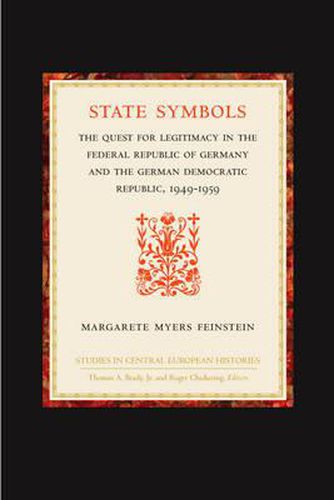Readings Newsletter
Become a Readings Member to make your shopping experience even easier.
Sign in or sign up for free!
You’re not far away from qualifying for FREE standard shipping within Australia
You’ve qualified for FREE standard shipping within Australia
The cart is loading…






After World War II, Germans not only had to re-build, they had to redefine their national political identity as well. This book traces how state symbols such as national colours, anthems, holidays, capital cities, and postage stamps were used to legitimize the two Germanies from 1949 to 1959. Although the Federal Republic of Germany and the German Democratic Republic (GDR) developed distinct post-war identities, the one cannot be understood apart from the other, for they were in direct competition to define the same state symbols. The study of symbols offers valuable insights into the realms of identity formation and of politics, that is, how symbols can promote political integration. By examining the creation of state symbols and the processes by which they were established in the public realm, Feinstein evaluates the extent to which German political culture overcame the Nazi past to legitimize both a republican and a socialist system. This book is especially relevant to scholars who want to understand the common ground upon which the citizens of today’s unified Germany can construct a shared identity.
$9.00 standard shipping within Australia
FREE standard shipping within Australia for orders over $100.00
Express & International shipping calculated at checkout
After World War II, Germans not only had to re-build, they had to redefine their national political identity as well. This book traces how state symbols such as national colours, anthems, holidays, capital cities, and postage stamps were used to legitimize the two Germanies from 1949 to 1959. Although the Federal Republic of Germany and the German Democratic Republic (GDR) developed distinct post-war identities, the one cannot be understood apart from the other, for they were in direct competition to define the same state symbols. The study of symbols offers valuable insights into the realms of identity formation and of politics, that is, how symbols can promote political integration. By examining the creation of state symbols and the processes by which they were established in the public realm, Feinstein evaluates the extent to which German political culture overcame the Nazi past to legitimize both a republican and a socialist system. This book is especially relevant to scholars who want to understand the common ground upon which the citizens of today’s unified Germany can construct a shared identity.